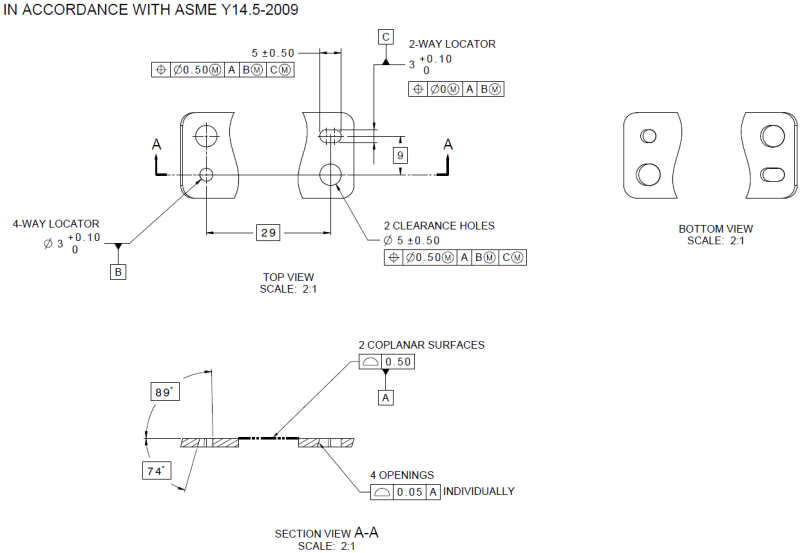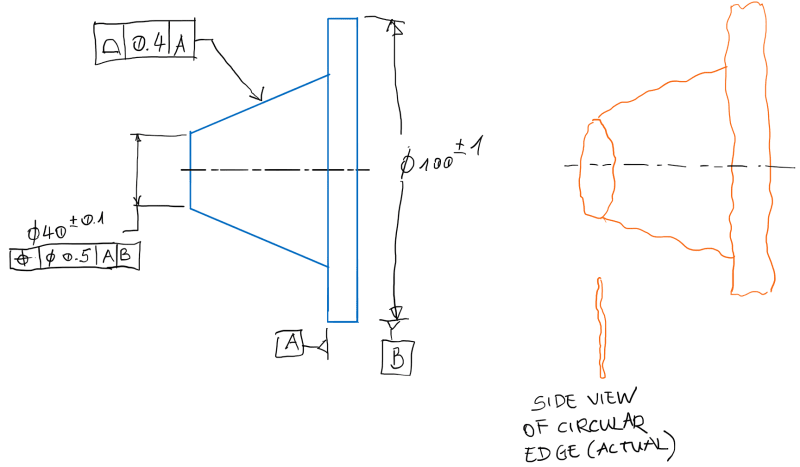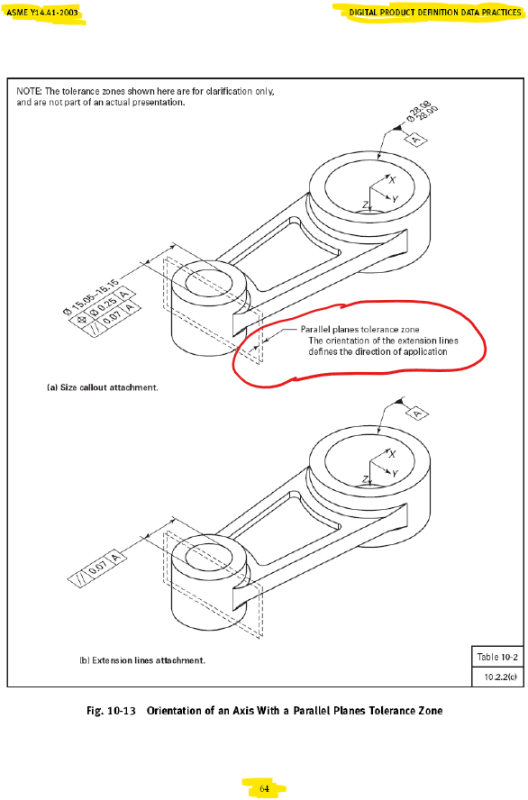pmarc,
The issue I see with the cone example and the basically located circular element is that theoretically, the center point should be derived from the unrelated actual mating envelope of the circular element. However, the mating envelope that will be used is not allowed to be unrelated - the basic relationship of the plane where the circular element is established to datum plane A imposes a specific orientation and location of the AME to the datum reference frame. This could probably be OK per the 94' version of Y14.5 but questionable per the newer two versions.
If I understand Tarator's case correctly, the circular element is on the intersection (edge) between the hole's surface and another nominally planar surface that is nominally perpendicular to the hole, so I think I understand why he suggests looking for a best-fit plane that may not coincide with any fixed 2D plane on which the tolerance zone circle may be, although because the method involves projection of points from different locations to a single plane, I think that there is nothing in the standard that suggests that this specific method is what should be done in such a case; for example, the edge where the hole meets the planar surface could be projected to a tangent plane to the planar surface (which may or may not be a datum plane). This may also contradict the "unrelatedness" of the AME, but I think the involvement of projection already introduces some non-standardized practise. Another problem with an edge is that it may not be sharp enough to detect its contour unambiguously.
All this assuming I understand the case under question correctly.
If I may suggest my own example:
An external surface of revolution of some curved, convex shape. The entire surface could be controlled by a generous profile tolerance but the peak diameter could be specified by a size dimension with direct tolerance, and a position tolerance referencing a datum feature which is a bore passing through the length of the feature. The center point of the circular element of the peak diameter would need to be located within some tolerance zone distributed about the datum axis. Naturally since there a no specific axial location where that element should he looked for, the center point should be allowed to fall within a cylindrical tolerance zone. It will surely miss any 2D circular tolerance zone area that may be established at a specific axial location.



